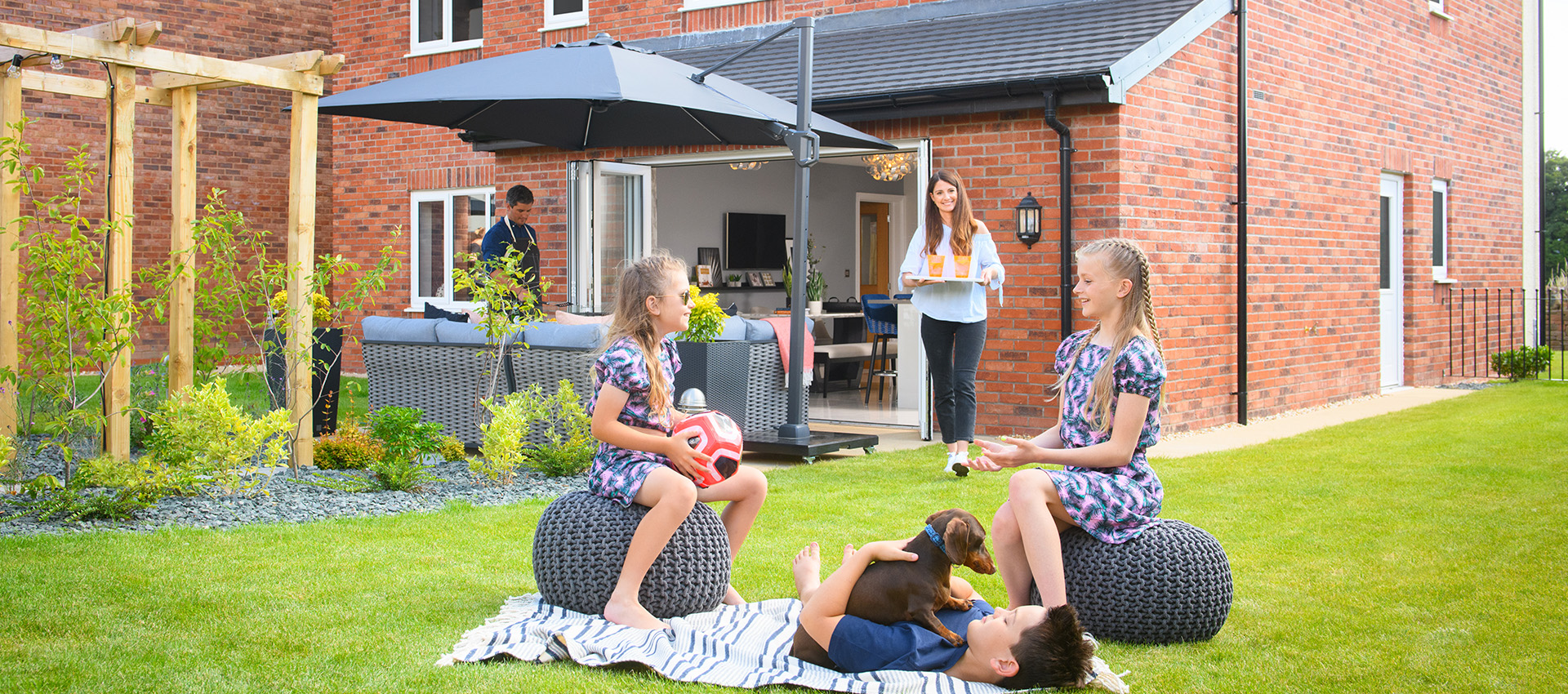
It is the homeowner’s responsibility to undertake a significant amount of maintenance to fully establish your new garden, probably more so than you would have to do in an established garden.
Some of the biggest concerns homeowners have with their gardens can be resolved through regular and ongoing maintenance by the homeowner.
Story Homes’ responsibilities include
- Providing a suitable garden and soil preparation, including topsoil, which meets the standards stated by the warranty provider
- Providing turf (where applicable) in a good condition upon legal completion of the new home
As the homeowner, your responsibilities include:
- Regular and ongoing maintenance of the new turf, including watering, fertilising and regular cutting and aeration – more maintenance will be required than in an established garden
- Adults, children, and animals should refrain from walking on the turf whilst it establishes itself – this will allow it to settle down evenly and prevent lumps and bumps
- The quality of your turf can be affected by animal urine and faeces, so avoid allowing your animal to foul on the turf
Story Homes is not responsible for the ongoing care and maintenance of your garden after legal completion. In summer for example, turf can easily dry out and die, and in winter, if not maintained, heavy rain or snow can cause problems. Areas close to edges and fences, or shaded areas, are also often neglected and can die without proper attention. Below are the essential tasks you will need to carry out to maintain your garden:
- Keep off the grass for the initial seasons – even small feet and paws can make a dent in the turf as it settles
- Mow your lawn regularly from late March until early October to maintain the grass at 50mm long. Adjust the mowing height as required to avoid scalping the ground and leave the grass slightly longer on the last cut of the year to give better protection for the winter months (at least 100mm or 4 inches)
- Aerate the lawn by spiking with a garden fork to the full depth of the fork or with a powered aerator. This improves the drainage and aerates the surface topsoil
- Protect the lawn from traffic in very wet weather, and when the ground is frozen or snow-covered
- Remove objects from the grass after use. There is a risk of damage to the turf if objects are left in place
- Newly laid turf should be watered daily until well-rooted during the coolest part of the day to avoid boiling the turf. Water the lawn thoroughly in dry periods. As a guide you should water the lawn if there has been no rain for 5-10 days but more frequent watering will be required in warmer weather. If lawns turn brown and dry during summer, they usually recover when the rain returns. Do not rely on natural rainfall to water the entire area of the lawn as areas sheltered from the prevailing wind could remain dry after rainfall
- Feed the lawn in late March to April with a spring or summer fertiliser and again in May to August if the grass has lost its freshness. Fertilisers should be applied when the soil is moist, or when rain is expected
- Apply a selective lawn weed killer which will not harm the grass in April to May and again in September. Further applications and hand weeding of difficult weeds may be required. Treat the lawn for pests and diseases where necessary
- Rake out dead moss, thatch, and leaves in autumn, to encourage healthy growth. The turf should also be scarified/raked in spring too
Garden levels
The finished level(s) of your garden will be contoured, and you should be aware that no garden will be completely flat. Retaining walls and structures are commonly used to overcome significant changes in level. Slopes within your garden will be used to overcome smaller level variances. We aim to provide a reasonably sized, relatively flat area within your garden but the exact size and nature of this is unique to each plot.
Soil condition
The soils within your garden are naturally occurring and therefore variable in their characteristics. You should note that clay-based soils are prevalent in many parts of the country, as are high levels of rainfall. As a result, garden areas may become saturated during and following periods of continuous rain. This may restrict the usability of your garden areas on a seasonal basis.







